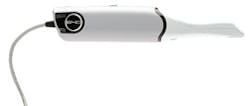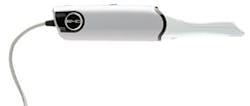Integrating technology into the dental practice: maximizing return on investment in multiple areas
by Gary Kaye, DDS, FAGD
The world is going digital, and dentistry is no exception. As practices strive to stay up-to-date, digital technology can be incorporated into practices to enhance and simplify procedures, helping dentists to achieve the maximum return on investment in more ways than one. Newer technology allows dental offices to offer advanced, more streamlined services, accept more patients, and provide treatments with greater efficiency.
Integrating technology into practices requires a delicate combination of clinical and management skills and should not be undertaken without careful planning. Detailed analyses of the practice, its current and future needs, and its staff members and their skills are required prior to introducing new technology. Since technology is an investment of time, money, and human adoption, a detailed, sequential plan of action can help a practice realize its objectives and goals more effectively. Here are some considerations for developing such a plan to ensure implementation and financial success when making a fundamental change with technology at the core.
Understanding changes in the dental practice
Practices may find it easy to make minor changes, such as adding a new computer. Major changes, such as switching to a new practice management system, may be more difficult. Many practices struggle the most when it comes to fundamental changes, a category under which integrating advanced technology such as CAD/CAM, digital radiography, or laser dentistry generally falls.
Fundamental changes involve a profound transformation in how the practice operates. Managing this type of change is more complex than managing minor changes, or "narrow gauge incremental" changes. The challenges of disruption and resistance are more profound, especially in a practice that has been operating in the same way for many years. Fundamental change involves doing something in a very different way, unlike anything the practice has done before. It requires a change in mindset, and many people do not want to experience that process, especially when they realize how change will disrupt their habits and comfort zone.
Fundamental change is not just about technology. It affects other areas of the practice, directly or indirectly. Introducing CAD/CAM and changing how we provide restorations involved more than the technology and equipment. It also involved scheduling patients for single-visit restorations and altering the way appointments were handled. Patients come in for fewer visits, but for longer periods of time. There was initial hesitation on the part of staff to learn a new way of doing restorations; it was unfamiliar and intimidating. Now, using the technology as part of a process is so seamlessly integrated into the practice, we can't imagine not having it.
Integration objectives and specific measures
When integrating technology, it behooves dentists to have specific objectives for themselves and the practice in mind, especially ones that can be quantitatively measured. When considering implementing a new process, procedure, or technology, it's worthwhile to consider its economic feasibility. Will the practice earn a profit from it, or is the practice just substituting this new equipment for laboratory costs? Is it an investment in something that will become outdated, costing the practice money in upgrades? Asking these questions can help practices determine if they are financially able to integrate new technology.
Understand, therefore, that a return on investment may not be immediately realized. So if new equipment is not needed, it may not be wise to make a purchase for the sake of buying something new. For example, if you do very few indirect restorations per month, you may find that your current technology and processes serve your purpose. It is important to distinguish between what you need and what you want.
However, it can be helpful to integrate a new technology even if the expected return on investment is not very high or if the practice does not urgently need it. For example, my practice did not need to purchase a digital apex locator. We were doing well without one, but the purchase proved to be economical in ways we hadn't considered. We drastically cut down on the radiation our patients are exposed to, procedures are much more streamlined, and we've found that patients are happier with the care they receive.
Additionally, productivity can be enhanced with technology. Using CAD/CAM in the practice allows an assistant to design restorations in the office under the dentist's supervision, since the dentist knows how the margins, contacts, and profile of the tooth should be. Practices don't need to add another step and explain this to a lab. Stain and glaze techniques become more streamlined as well, and the entire process is simplified and more productive when performed in-office.
It is also critical to understand that technology should be implemented for specific reasons, aligned with the practice's missions and values. If your objectives are to make single-visit treatments a reality for your patients, develop a plan to make this happen. It may also be important to include time to work out any initial problems with the new changes to your practice, and to be open to new solutions.
Managing the human side of technology
Dental professionals must stay abreast of new technologies. Opportunities for learning abound, especially online, where webinars, discussion groups, and communities of dentists can be found. Online access to laboratories for sharing information, along with access to continuing education classes, is possible, and dental professionals can take advantage of these opportunities to develop and enhance their skill sets.
For example, when dentists first began taking impressions, it was a frustrating experience. No one knew how to do it correctly the first time, and it required effort. Now, practices can't imagine not taking impressions. The same thing happens when new impression materials and techniques are introduced. Once new procedures are learned and mastered, office productivity soars.
One of the biggest mistakes a practice can make is giving up too quickly. This is easy to do when change is frustrating, success is not immediately realized, or integration is unwelcome by staff. Similarly, it is easy to recognize the limitations of technology and more difficult to see the future success it can bring. This underscores the need for a detailed plan for integration that incorporates staff opinions. When everyone sees that change does not just mean the introduction of new technology, but a new mindset and approach to how they will practice, they can become active participants in the transformation.
The dentist's multiple roles
During any given day, dentists wear one of three hats: clinician, manager, and practice owner. As a clinician, we consider what is best for patients. When you take care of your patients, everything else will be taken care of, and this is how you, as a clinician, can approach technology. As a manager, you are responsible for your staff, so you can involve them from the beginning in decisions that affect them so they will be more receptive to change. As a practice owner, you also can consider what will be best for the practice. Digital technology, therefore, should provide you with a return on investment, whether through a monetary profit, new patients, enhanced patient care, or more efficient and productive teamwork flow.
Asking the right questions
When integrating digital technology, a well-thought-out plan that addresses the right questions can accelerate your return on investment. Are there specific objectives that digital technology can help the practice achieve? More importantly, is the practice staffed by the right team of people to help successfully integrate digital technology? It is critical that staff have an open mind, are willing to move forward with change, and see the change as a paradigm shift in the practice, not just the installation of new equipment.
Most changes, especially fundamental changes, can be good for practices. But adding new technology will not fix underlying problems with a practice. Those need to be honestly addressed before incorporating something new. This becomes a great opportunity to recalibrate systems and procedures that may have been overlooked for some time. Incorporating new technology into a practice does not fix what is wrong, but it will enhance what is already working well.
Is the practice ready to start the integration of digital technology, or are other projects happening? Starting too many things at once can be stressful. What lessons can be learned from the past few times the practice implemented changes? Finally, know that you must be willing to provide leadership and focus to your staff when integrating technology.
References available from the author upon request.
Dr. Gary Kaye is founder of Kaye Dentistry PLLC, New York City. He consults with dentists and dental manufacturers, and lectures on ceramics, occlusion, and digital dentistry, with live patient demonstrations. He is a graduate of the Dawson Academy, Sirona Speakers Academy, and guest faculty of Henry Schein's E4D University. [email protected]
Past DE Issues

